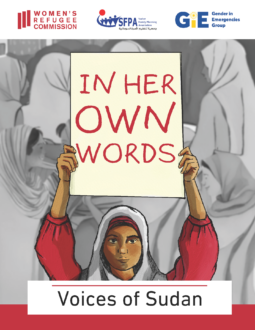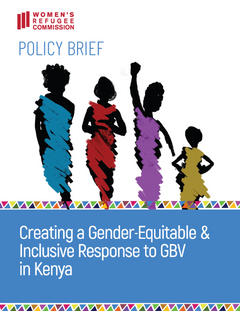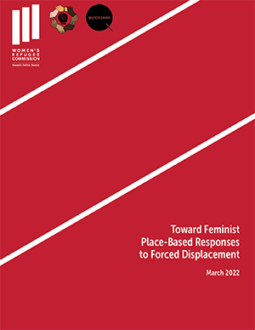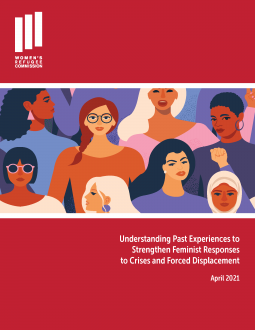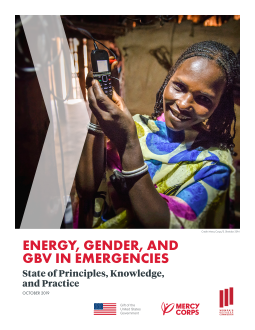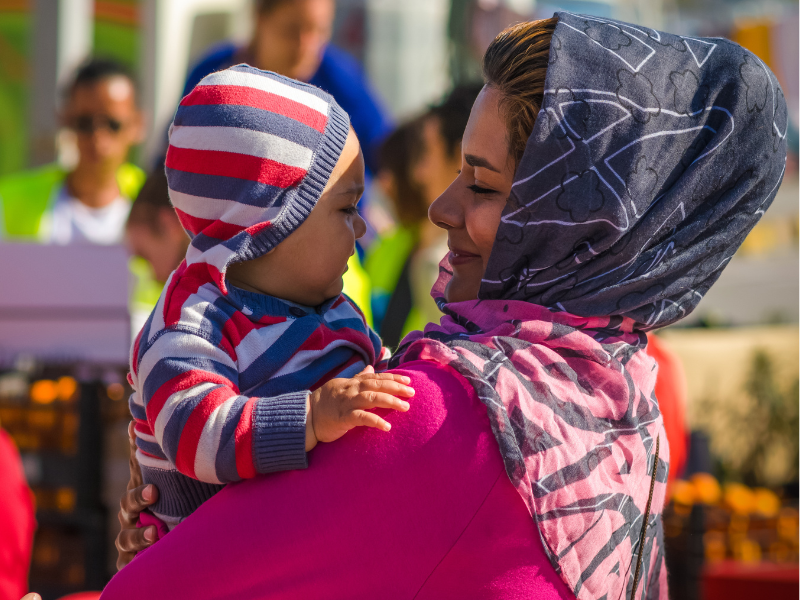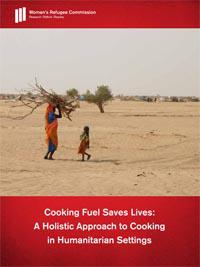
Cooking Fuel Saves Lives
PublishedIn complex emergencies, the humanitarian system tends to address issues of concern by focusing on individual sectors, such as health or food. However, the Women’s Refugee Commission has found that when it comes to cooking fuel, an integrated approach is essential. Recognizing the cross-sectoral nature of cooking fuel, the Women’s Refugee Commission and the InterAgency Standing Committee Task Force on Safe Access to Firewood and alternative Energy in Humanitarian Settings (SAFE task force) developed a framework outlining the key fuel-related challenges and solutions across eight sectors of humanitarian response. This comprehensive and holistic approach to all eight sectors is necessary to ensure that displaced women and their families have safe access to appropriate cooking fuel. Below is information on the camp coordination and camp management sector.
The camp coordination and camp management (CCCM) sector is meant to improve living conditions for refugees and internally displaced people (IDPs) living in camps. It aims to ensure that they are provided with assistance and protection and that any gaps in services are identified and ad- dressed. Camp managers are also responsible for working with refugee leaders, host governments and local communities to mitigate potential concerns or incidents regarding access to land and natural resources.
Shelter actors are typically responsible for overseeing the camp site selection and planning process, and for ensuring that shelter materials—usually wood poles, tarps and rope—are provided to beneficiaries when camps are being established. In many regions, they also coordinate the composition and distribution of non-food items, such as cooking pots and buckets for carrying water.
Camps for displaced people are often located in environmentally fragile areas, which can be particularly negatively impacted by a sudden influx of new residents. The environment and natural resource management sector works to ensure that these potential impacts are mitigated as much as possible from the earliest stages of response, including during the site selection process before the camp is even established. Environment workers also oversee environmental management and rehabilitation projects, such as forest conservation, tree planting and the establishment of green belts and woodlots in areas surrounding camps.
The UN World Food Programme (WFP) and its implementing partners provide food assistance and fight hunger and malnutrition in humanitarian settings, whether through direct distribution or in exchange for work.
In addition to establishing health clinics and providing care, health actors undertake education campaigns on the prevention and management of health concerns, such as hand washing and sanitation.
The SAFE task force combined traditional, school-based education and the information, education and communication (IEC) sectors into one.IEC is a process of raising public awareness to promote positive behavior change through different kinds of learning, including messaging campaigns, demonstrations, dissemination of printed materials, radio or drama and other creative mechanisms. IEC is frequently associated with health activities (promoting breastfeeding, for example), but can be used to raise awareness and spread information about a wide variety of topics. Schools and other learning environments for children and young people are also key venues for awareness raising and information sharing. In many displacement settings, school feeding programs are used to encourage school attendance, reduce burdens on families and improve child nutrition.


